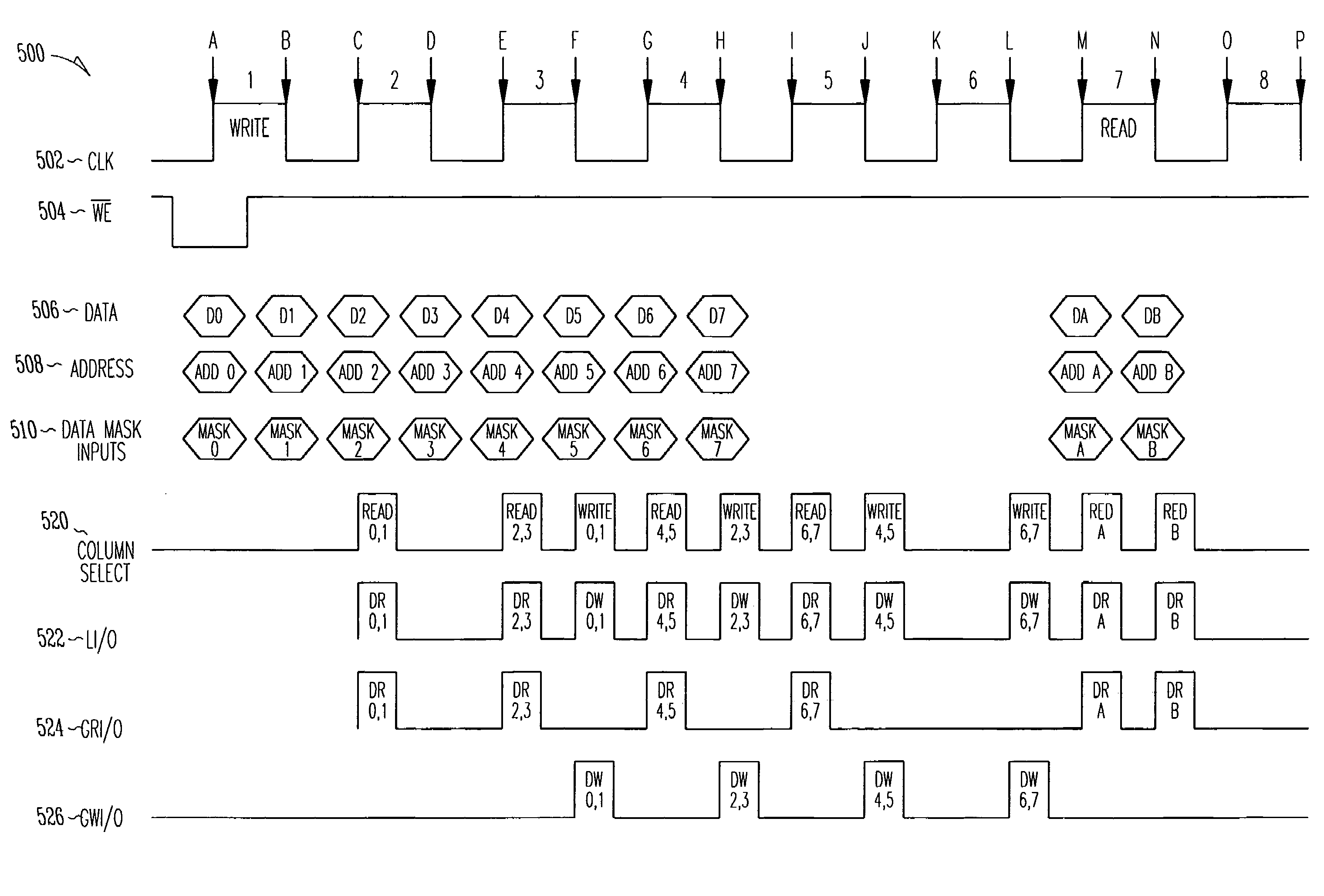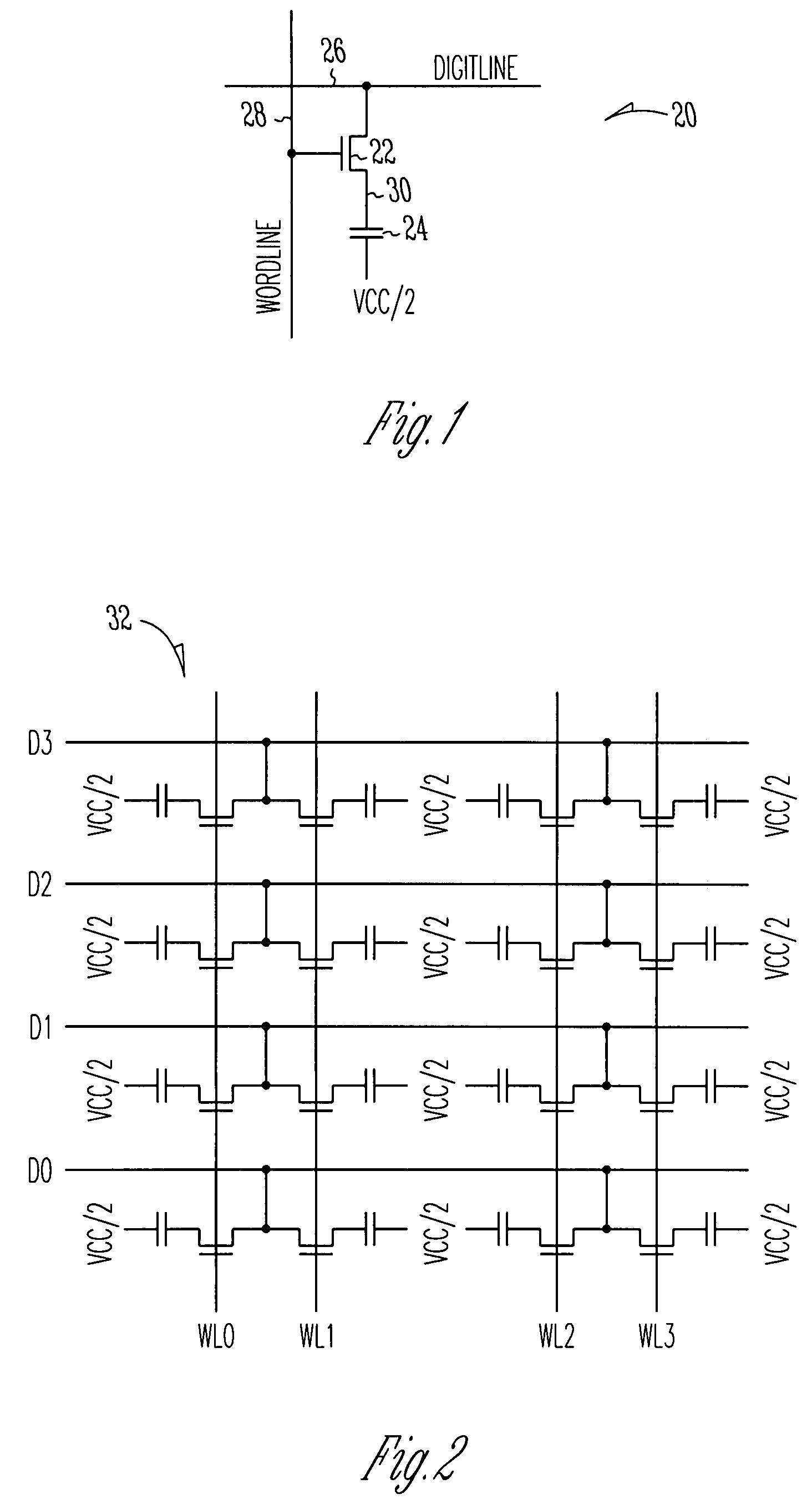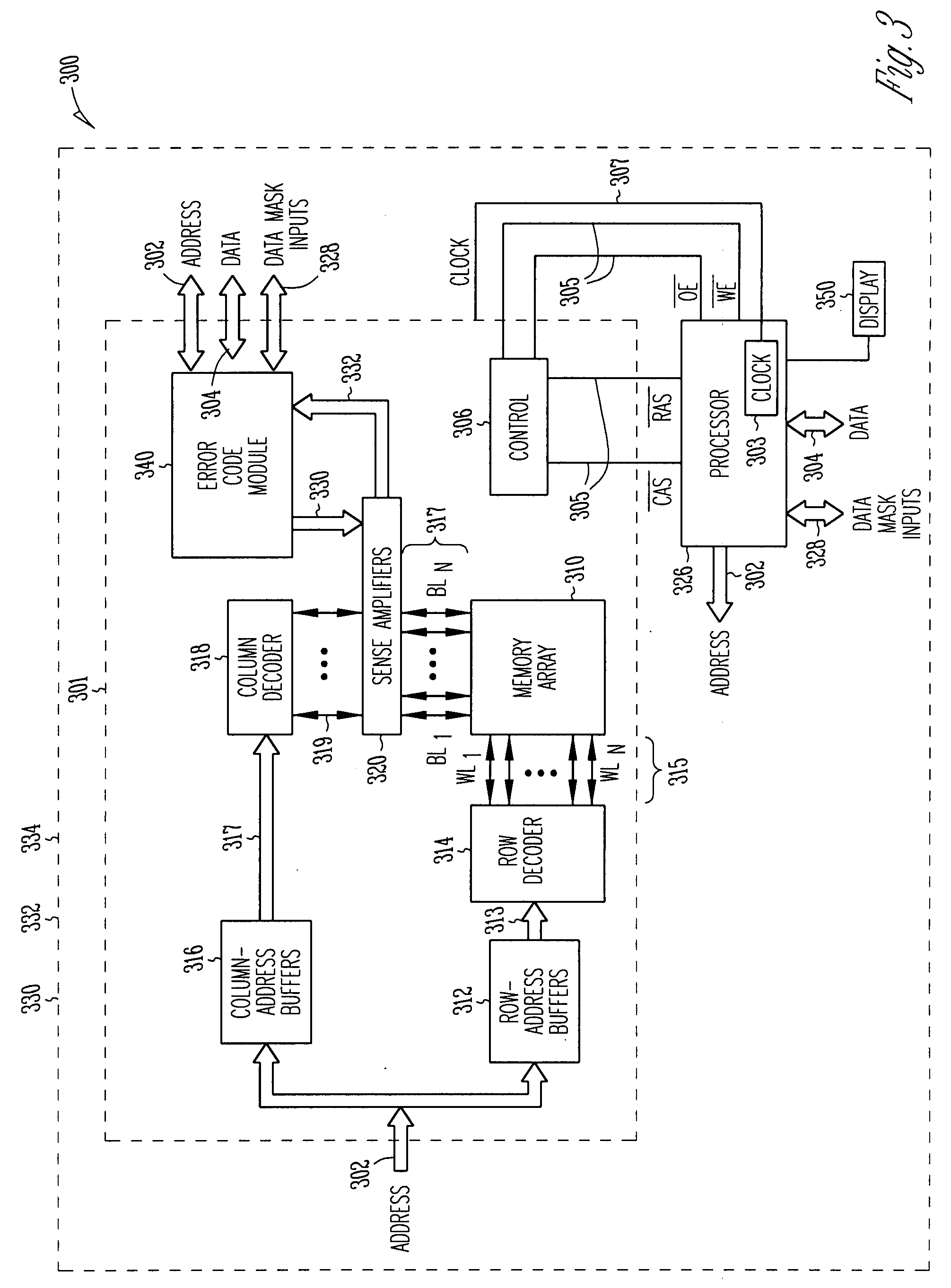Memory array error correction apparatus, systems, and methods
a memory array and error correction technology, applied in the field of memory devices, can solve the problems of not being able to perfectly achieve the recall of data from memory arrays in every case, penalizing the overall operation of the array, and capacitors not being ideal devices
- Summary
- Abstract
- Description
- Claims
- Application Information
AI Technical Summary
Benefits of technology
Problems solved by technology
Method used
Image
Examples
Embodiment Construction
[0010]This document describes apparatus, methods, and systems that can be used to extend the processes of reading, modifying, and writing data in a memory array without interrupting a substantially continual stream of data to be received and written into the memory array. Such memory arrays may form a part of many different types of commercially available memory devices, as noted below.
[0011]As disclosed in further detail below, in various embodiments a column cycle associated with memory operations is divided in two halves. A column cycle refers to an operation, including but not limited to, a write operation associated with a particular address.
[0012]A column refers to a group of memory cells coupled to a particular word line that are selected when an address associated with the word line and an individual memory cell or a group of memory cells coupled to the word line are selected by the application of the address to the column select input of the memory array.
[0013]A column cycl...
PUM
 Login to View More
Login to View More Abstract
Description
Claims
Application Information
 Login to View More
Login to View More - R&D
- Intellectual Property
- Life Sciences
- Materials
- Tech Scout
- Unparalleled Data Quality
- Higher Quality Content
- 60% Fewer Hallucinations
Browse by: Latest US Patents, China's latest patents, Technical Efficacy Thesaurus, Application Domain, Technology Topic, Popular Technical Reports.
© 2025 PatSnap. All rights reserved.Legal|Privacy policy|Modern Slavery Act Transparency Statement|Sitemap|About US| Contact US: help@patsnap.com



